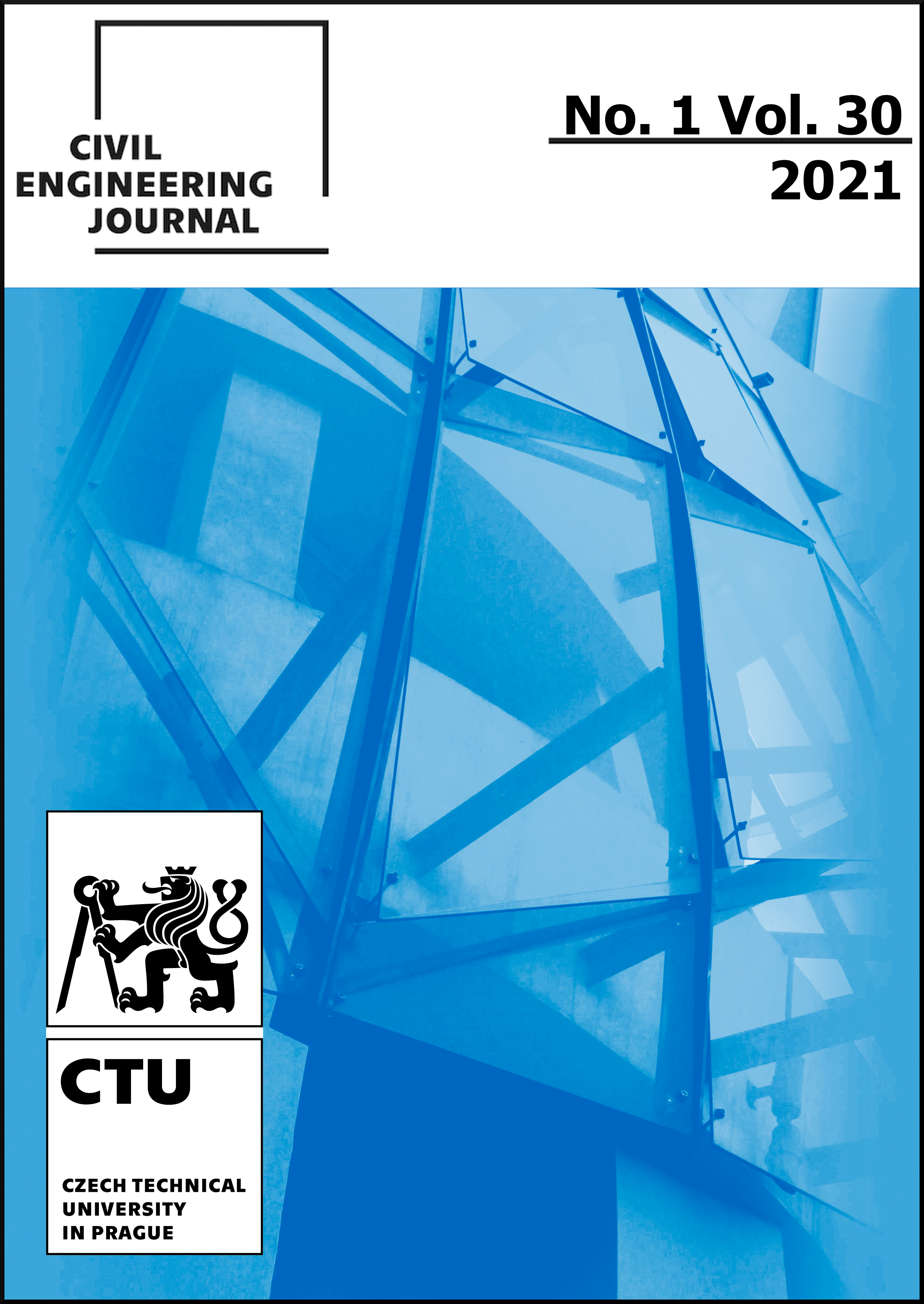MECHANICAL RESPONSE ANALYSIS AND TREATMENT MEASURES OF PARTITION WALL OF METRO STATION
DOI:
https://doi.org/10.14311/CEJ.2021.01.0015Keywords:
Metro station, Partition wall, Force response analysis, FLAC 3D, Construction methodAbstract
In the process of metro station construction, the partition wall is usually used to prevent the displacement of the soil behind the wall to ensure the construction platform. This research aims to analyze the response of partition wall to keep the safety of the structure. The time-horizontal displacement and cracks of the partition wall are measured during the process of metro station construction. The finite element software FLAC 3D is used to simulate the response of partition wall, and the reasons of partition wall cracking and displacement are analyzed by finite element simulation and measurement data. The stiffness and self-stability of the partition wall in the station is powerful, the stress concentration appeared on the central area and caused cracks of the partition wall. Reducing the pressure exerted on the partition wall and shifting partial pressure exerted on the partition wall by the construction of the medium plate can solve the tress concentration problem. Through the data analysis of the strengthened partition wall, the reinforcement effect is good, ensuring the safety of the subsequent construction. The causes of partition wall cracking are found during process of metro station construction, and the solution proposed in this paper is effective. Engineers can refer to this paper to analyze the response of partition wall in the construction of similar structures, which can ensure construction safety and reduce construction cost.
Downloads
References
XU Ren-zhong, YUAN Shun-de. (2016),“Analysis of stress and deformation in enclosure structure of metro foundation pit in expensive soil stratum”, Railway Engineering, (02):84-87
ZHANG Ming-ju, HE Huan, LI Chun-hui, et al. (2013),“Deformation and Force response analysis on Retaining Structure of an Open-excavated Subway Station by Monitoring and Numerical Simulation”, Journal of Beijing University of Technology, 39(6):875-880
CHEN Xin-nian, GUO Ying, HE Xiao-li, et al. (2014),“Analysis on the Deformation Laws of Deep Foundation Excavation of Subway Station in Soft Rock Area in Nanning”, Construction Technology, 43(01):96-99+108.
MOHAMED Nabil Houhou, FABRICE Emeriault, ABDERAHIM Belounar, (2019),“Three-dimensional numerical back-analysis of a monitored deep excavation retained by strutted diaphragm walls”, Tunneling and Underground Space Technology, (83), 153-164.
ZHUANG Hai-yang, YANG Jing, CHEN Su, et al. (2019),“Seismic performance of underground subway station structure considering connection modes and diaphragm wall”, Soil Dynamics and Earthquake Engineering, (127), 105842.
TEPARAKSA Wanchai, TEPARAKSA Jirat, (2019),“Comparison of diaphragm wall movement prediction and field performance for different construction techniques”, Underground Space, 4(3), 225-234.
GUO Ying. (2014), “The Study of Deformation Laws of Deep Foundation Pit and Its Design at a Metro Station in Xi'an”, Master thesis of Xi'an University of Science and Technology, China.
XIAO Feng. (2014), “Three-dimensional force-deformation characteristics research of subway station with cover and excavation top down method construction process”, Master thesis of Beijing Jiaotong University, China.
WEI Ran. (2014), “Study on the Deformation Law of Retaining Structure with Monitoring Data and Numerical Simulation”, Master thesis of Shijiazhuang Tiedao University, China.
JIANG Kai. (2013), “Structure Force response analysis of Metro Station Built by Cover-excavation Method and Numerical Simulation Stud, Master thesis of Beijing Jiaotong University, China.
Mokhatar S N , Sonoda Y , Zuki S S M , et al. Simulation of Shear and Bending Cracking in RC Beam: Material Model and its Application to Impact[J]. IOP Conference Series Earth and Environmental Science, 2017, 140(1):012130.
WANG Jian-ning, MA Guo-wei, ZHUANG Hai-yang, et al. (2019),“ Influence of diaphragm wall on seismic responses of large unequal-span subway station in liquefiable soils”, Tunneling and Underground Space Technology, (91), 102988.
GUO Pan-pan, GONG Xiao-nan, WANG Yi-xian. (2019),“Displacement and force analyses of braced structure of deep excavation considering unsymmetrical surcharge effect, Computers and Geotechnics, (113), 103102.
ZHUANG Hai-yang, WANG Rui, SHI Pei-xin. (2019),“Seismic response and damage analysis of underground structures considering the effect of concrete diaphragm wall”, Soil Dynamics and Earthquake Engineering, (116), 278-288.
Downloads
Published
Issue
Section
License
Copyright (c) 2021 Author

This work is licensed under a Creative Commons Attribution-NonCommercial 4.0 International License.
Authors who publish with this journal agree to the following terms:
- Authors retain copyright and grant the journal right of first publication with the work simultaneously licensed under a Creative Commons Attribution License that allows others to share the work with an acknowledgement of the work's authorship and initial publication in this journal.
- Authors are able to enter into separate, additional contractual arrangements for the non-exclusive distribution of the journal's published version of the work (e.g., post it to an institutional repository or publish it in a book), with an acknowledgement of its initial publication in this journal.
- Authors are permitted and encouraged to post their work online (e.g., in institutional repositories or on their website) prior to and during the submission process, as it can lead to productive exchanges, as well as earlier and greater citation of published work (See The Effect of Open Access).











